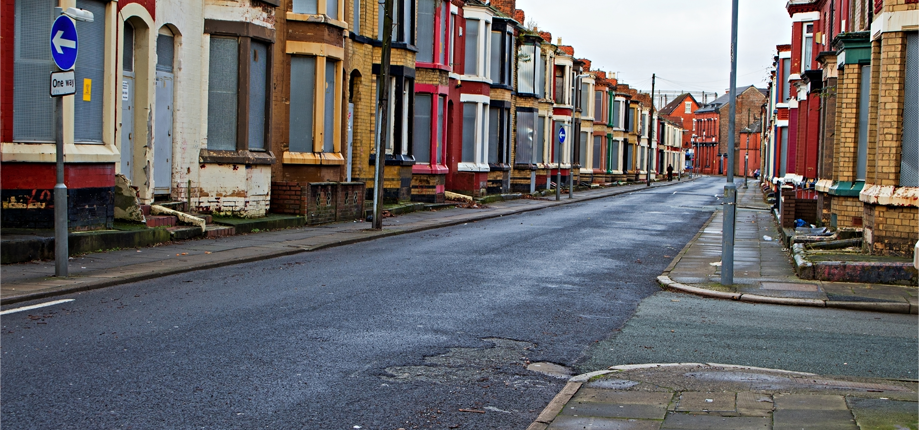Refurbishing (or ‘retrofitting’) refers to the regeneration of buildings to reduce energy use and associated greenhouse gas emissions. More than just a pursuit to improve aesthetics, it involves making smart changes throughout the property to significantly reduce energy usage and improve performance.

When undertaken by housing associations, refurbishment offers mutual benefit for both tenant and landlord - impacting on tenants lives for the better, whilst simultaneously reducing maintenance costs (and complaints) for the housing association. Not only that, refurbishment also improves the longevity of existing housing stock, ensuring it is fit for use for years to come and won’t fall into disrepair any time soon.
Why is refurbishment so important?
Due to the shortage of affordable homes, the government has stated that we need to build around 250,000 additional houses each year to meet increasing demand. However, with the latest data suggesting that there are over 200,000 homes which have been empty for over six months in Britain, do we really need such a bold and ambitious target? Or could we instead include the retrofit of existing empty properties to make housing the population an achievable goal?
A property becomes 'long term' empty when it's been unoccupied for 6 months or more. In London alone, for example, there were 20,915 homes sitting idle for over six months in 2015 - that is almost £12.4 billion worth of empty property, in a city facing an extreme housing shortage.
The Empty Homes Agency in England has estimated that the cost of refurbishing an empty home is between £6,000 - £25,000. In comparison, the average cost of a new build home in the UK is in excess of £100,000. And of course when you are bringing an empty home back into use the infrastructure and local services will already be in place.
Fuel poverty
UK homes are currently some of the most expensive to heat in Europe because of poor maintenance and insulation. The UK has the highest levels of fuel poverty of a dozen comparable EU nations, as well as one of the worst proportions of homes in a poor state of repair.
ONS figures show that over the winter of 2016-17 there were 31,800 excess winter deaths among the over 65s from cold-related illness such as heart attacks and strokes (compared to 20,800 the previous year). One third of all the excess winter deaths reported were caused by respiratory diseases. Whilst it’s true that not all winter deaths are due to fuel poverty, over 10m British families live in a home with a leaking roof, damp walls or rotting windows. The links between cardiovascular diseases and cold, damp homes cannot be ignored.
Housing Associations are always looking to reduce carbon and increase renewable credentials, whilst also attaining maximum tenant satisfaction. Replacing heating systems such as direct electric and storage heaters with renewable alternatives will not only be efficient and sustainable, but it will also significantly improve comfort levels and offer a level of control craved by many tenants in this, the age of technology.
The use of inefficient heating systems over prolonged periods of time can cause extensive damage to a property. Mould and damp is unhealthy, unsightly and damages furnishings; at its worst it can render a house entirely uninhabitable and unprofitable. Repairing its damage is a time-consuming and needless expense, because without addressing the underlying cause of the damp, you only serve to lay hard work and money to waste.
Needless to say, it is a national disgrace that thousands of people are dying unnecessarily every year - lives that could be saved by installing better insulation or a heat pump, for example. As housing professionals, it is our corporate social responsibility to do something about this.
In summary
The challenges of preventing fuel poverty, reducing excess winter deaths and meeting carbon targets urgently need to be tackled. However, projects that are designed to help people out of fuel poverty and improve the standard of properties are often falsely seen as complex and high risk, particularly for social housing providers facing significant budgetary constraints. This can often lead to refurbishment projects being delayed or put off entirely.
However, focusing on new build alone cannot resolve the issues we now face as a country, and is an unsustainable and unethical work around. Innovation within the retrofit sector is demonstrating time and time again that refurbishment makes financial and environmental sense. This can no longer be ignored and our industry strongly asserts that regeneration of homes that are ultimately unfit for occupants must become of greater priority. Half-hearted, insincere approaches to retrofit from government will not make a big enough impact. It’s time to rethink retrofit.
This article and other blogs by HA’s Joe Bradbury appear regularly on www.les.mitsubishielectric.co.uk/the-hub which contains useful and informative articles on legislation, technology and sustainability.
- Log in to post comments















